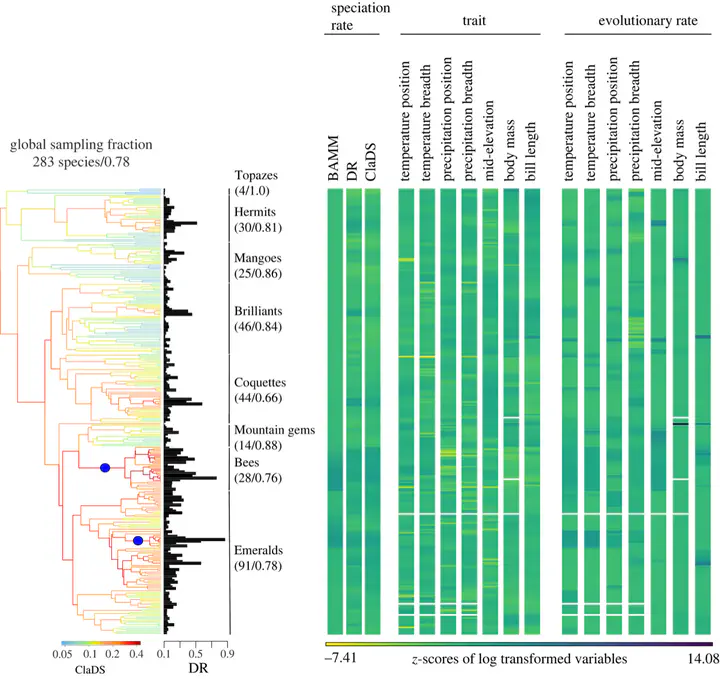Morphology and niche evolution influence hummingbird speciation rates
 Image credit: Elisa Barreto
Image credit: Elisa Barreto
Abstract
How traits affect speciation is a long-standing question in evolution. We investigate whether speciation rates are affected by the traits themselves or by the rates of their evolution, in hummingbirds, a clade with great variation in speciation rates, morphology and ecological niches. Further, we test two opposing hypotheses, postulating that speciation rates are promoted by trait conservatism or, alternatively, by trait divergence. To address these questions, we analyse morphological (body mass and bill length) and niche traits (temperature and precipitation position and breadth, and mid-elevation), using a variety of methods to estimate speciation rates and correlate them with traits and their evolutionary rates. When it comes to the traits, we find faster speciation in smaller hummingbirds with shorter bills, living at higher elevations and experiencing greater temperature ranges. As for the trait evolutionary rates, we find that speciation increases with rates of divergence in the niche traits, but not in the morphological traits. Together, these results reveal the interplay of mechanisms through which different traits and their evolutionary rates (conservatism or divergence) influence the origination of hummingbird diversity.